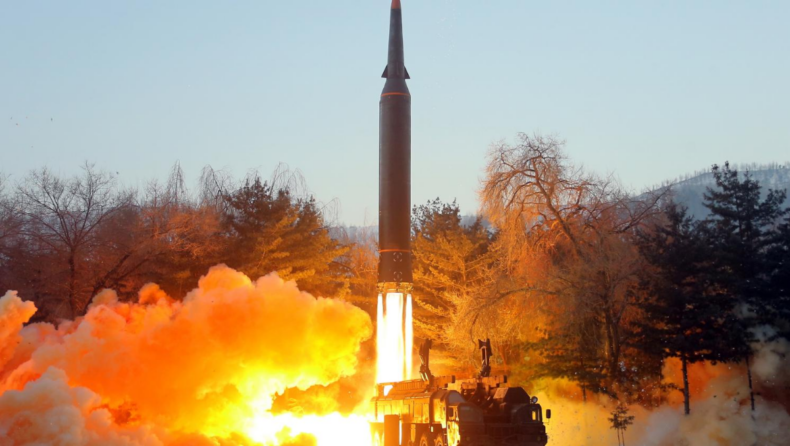The US and Japanese defense ministers on Wednesday agreed to collaborate on joint research and development for defense solutions against hypersonic weapon systems, in a move to tightly integrate their national security strategies.
The talks between U.S. Defense Minister Lloyd Austin and his Japanese counterpart, Yasukazu Hamada, were held at the Pentagon.

This move comes amid increasing tensions between the US and Japan on one hand and China on the other as a result of U.S. House of Representatives Speaker Nancy Pelosi’s recent visit to Taiwan.
This was their first interaction in person since Hamada’s appointment as the Japanese defense minister in August.
The narrow strait near Taiwan is economically and strategically important to Japan as a majority of its trade is done through this passage. The Chinese take-over of Taiwan will threaten Japan’s trade and sovereignty over the Senkaku Islands, claimed by China.
During the meeting, Austin reaffirmed that the Senkaku Islands come under the purview of the US-Japan security treaty; therefore, in the event of an attack on the uninhabited islands, the US will come to Japan’s aid.
The decision to collaborate on joint research against hypersonic weapon systems was first announced by them back in January when North Korea also announced the testing of its hypersonic missiles.
Last month too, the defense ministers of the two countries reconfirmed their joint front against any threats in response to the launch of ballistic missiles by China into disputed waters near Japan.
What are hypersonic weapons?
Hypersonic weapons are missile systems that can move and travel at least at Mach 5 or five times the speed of sound. In contrast to the hypersonic missile’s capacity to change course, the existing ballistic missiles follow a predetermined path.
Since they may be guided to the intended target, hypersonic missiles differ from ballistic missiles in that they do not follow a ballistic trajectory.

The new hypersonic weapons follow depressed trajectories, usually remaining inside the atmosphere, in contrast to ballistic missiles, which also reach hypersonic speeds.
By flying too high for standard surface-to-air missile defenses to intercept them and too low for ballistic missile defenses to engage in combat, they are able to circumvent the defenses that are already in place.
Besides China, Russia and the US are on par with it in the development of hypersonic missiles. Russia has claimed to use hypersonic aeroballistic missiles called the Kinzhal aviation missile system in the Ukraine War, while North Korea has also claimed to have successfully fired them in January.
India, Japan, Australia, Germany, and France have also started developing hypersonic weapons.
Japan-US Ties
Hamada also talked about Japan’s plan to update its national security documents while a substantial increase in its defense budget was planned during the meeting.
The defense ties between the US and Japan date back to the post-Second World War occupation of Japan by US forces, whereby Japan adopted a “no war” clause in the form of Article 9 of its constitution.
Since then, Japan has been heavily dependent on the US for its defense requirements and requires its protection in the event of a conflict. In return, the US has promised to defend Japan in case it is threatened.
In a major change to the long-term security and diplomacy policy of 2013, Japan is set to update its National Security Strategy by the end of the year. This development can be seen in the context of escalating regional security threats and challenges.
In the face of any major conflict, the US and Japan are anticipated to stand together owing to their deep-rooted ties.
The US announced its National Defence Strategy in March, targeting China as the “most consequential strategic competitor” and treating threats from China as a higher priority in the order of priority.
Currently, both Japan and the United States see China as a major threat to international peace and security and have taken positions to counteract China’s increasingly aggressive approach in the Indo-Pacific.
The points of friction between the US, Japan, and China are mostly located in the Indo-Pacific region. Taiwan and the South China Sea remain two major hot spots out of the others.
The collaboration on joint research and development for defense solutions against hypersonic weapon systems announced by the US and Japanese defense ministers on Wednesday reasserts their long-standing relationship.













